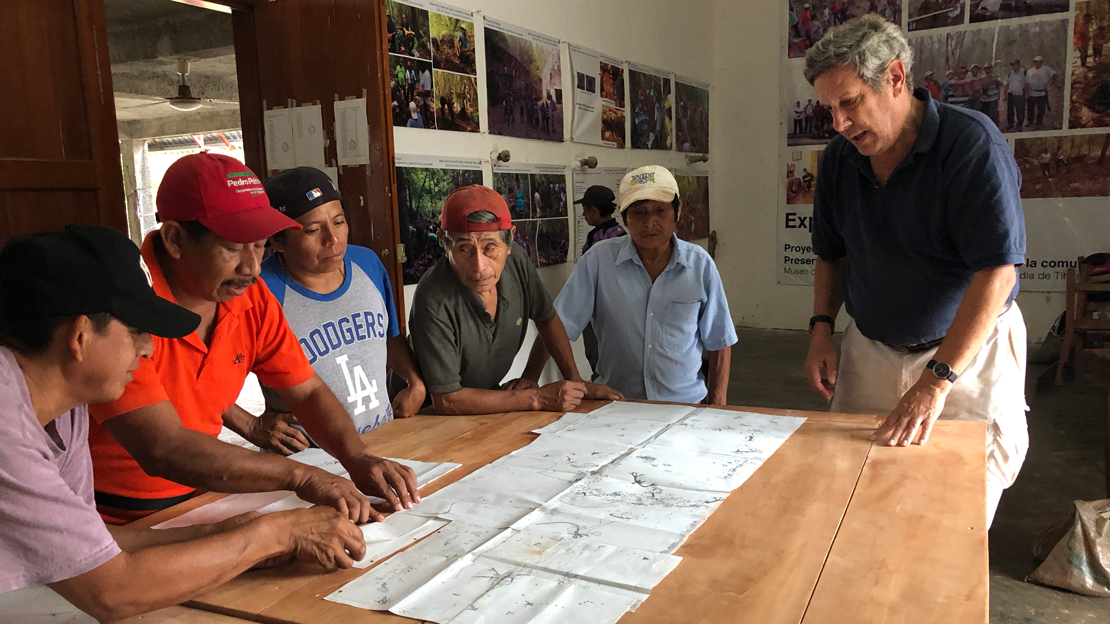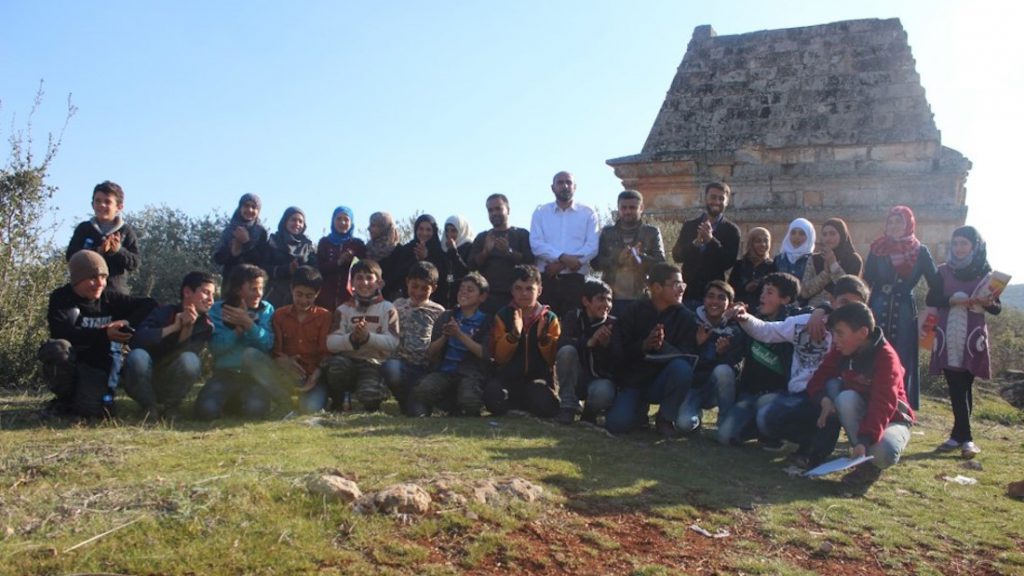Field Research

The PennCHC’s intellectual research draws upon Penn’s longstanding tradition of applying expert knowledge to pressing contemporary problems. Noting that many of the basic questions surrounding cultural heritage have yet to receive proper theoretical attention, the PennCHC aims to address such questions as what constitutes cultural heritage, cultural properties, communities, and sacred objects; why have cultural heritage and human rights become intertwined; what responsibilities do academics and museums have toward their indigenous, scholarly, and public constituencies; and what is the future of heritage policy and museums more broadly.
Tihosuco Heritage Preservation and Community Development Project (Quintana Roo, Mexico)
The Tihosuco Heritage Preservation and Community Development Project is an ongoing collaboration between the PennCHC, the Museum of the Caste War, the Tihosuco Ejido, and the Mayor’s office of Tihosuco. Together with the PennCHC, these partners are committed to exploring diverse aspects of local cultural patrimony and evolving Maya identity.
Tihosuco, a small Maya town located on Quintana Roo’s northern frontier with the state of Yucatán, has a unique history as the place where the Caste War started in 1847. A rebellion and war of resistance that lasted many decades, the Caste War’s imprint defines both the region and the town. The Caste War of Yucatán (also known as the Maya Social War) is generally acknowledged as the longest and most successful indigenous rebellion in Latin American history. For the past 80 years, the people of Tihosuco have been preserving the remnants of this rebellion on their ejido lands. Abandoned towns, haciendas, ranchos, roads and walls are all found throughout the ejido lands surrounding the town.
Tihosuco’s remarkable early colonial history, its abandonment during the 60-year Caste War and eventual re-settlement in the 1930s creates a natural division in research focus: before and after abandonment. Personnel from the Tihosuco partners, the University of Pennsylvania, and Mexican scholars respond to community-defined priorities focused on the ties that bind place and people, the past to the present and the present to the future.
The project aims to
- Helps bring small-scale economic growth to the town and community based on its rich cultural heritage
- Through research and community engagement, creates an interpretive framework for the rebellion story to be understood and presented by Maya people of Tihosuco
- Preserves the physical evidence of the colonial and Caste War eras
California Indian Terminated Tribes Project (California, USA)

Federal government. Many of these tribes are located in California. Only Federally recognized Indian tribes are permitted to participate in Indian programs such as housing and healthcare, and they alone can make claims for the return of human remains and sacred objects under the Native American Graves Protection and Repatriation Act. Two laws, one in 1958 and the second in 1964, terminated the legal existence of California’s Indian tribes. Most have now regained their Federal status through litigation or Act of Congress—but some have not. Other tribes were administratively terminated in the 1970s and 1980s and have not been restored to Federal status.
The California Indian Terminated Tribes Project (CITTP) collaborates with Native American communities seeking to restore their Federal recognition, preserve sacred lands, and to revitalize their culture. CITTP takes tribal priorities as a starting point for community-based participatory research.
Project ‘U Mari (Sicily, Italy)

Stanford University, Brock University, Suor Orsola Benincasa University, Soprintendenza del Mare
Project ‘U Mari seeks to understand and integrate the diverse maritime heritage of mobilities, interactions, and livelihoods that have defined the central Mediterranean over the millennia, and to mobilize this heritage in support of local engagement and development.
At the heart of Mediterranean seaborne connections, the southeast tip of Sicily provides an ideal vantage point for examining how interrelated forms of mobility have created shared local histories. The sea’s connective power and rich resources bind communities to each other and to distinctive ways of life that have fundamentally shaped cultural development. Building on the Marzamemi Maritime Heritage Project (2012-2019) and its excavation of the late antique “church wreck”, Project ‘U Mari expands the scope of heritage work in the region. The material evidence for varied and long-lasting maritime paths—commerce, fishing, migration—can generate meaningful links among peoples and their pasts across the centuries and the shared waters of the central Mediterranean. Spanning thousands of years and kilometers of coastline, southeast Sicily’s rich heritage encompasses submerged and terrestrial landscapes and artifacts, standing industrial and nautical architecture, intangible customs and traditions, contemporary economies of fishing and tourism, and long-term dynamics of coupled human-natural systems. Leveraging this multi-faceted material and historical record to support community-based initiatives requires an approach that embraces not only shipwrecks and ports but more recent social and environmental histories of tuna fishing, archaeological documentation of contemporary migrant journeys, and an immersive Museum of the Sea with associated coastal and underwater heritage trails.
Safeguarding the Heritage of Syria and Iraq Project (Syria, Iraq)

The PennCHC supports Syrians and Iraqis in their efforts to protect cultural heritage in conflict-affected areas through the Safeguarding the Heritage of Syria and Iraq (SHOSI) Project.
Alongside the Smithsonian Institution, the International Council of Museums, and other organizations, the Penn Cultural Heritage Center has spearheaded efforts to work directly with Syrian and Iraqi archaeologists, museum professionals, and conservators who are working to protect endangered sites and collections in their care in often desperate conditions. In 2017, the PennCHC co-curated the exhibit Cultures in the Crossfire: Stories from Syria and Iraq at the Penn Museum to spotlight these efforts, and continued on-the-ground preservation interventions. Ongoing efforts in the Ancient Cities of Northern Syria World Heritage Site are focused on working with communities displaced by the conflict who have taken shelter in the standing ruins, preserving traditional cultural handicraft traditions, and the protection of the museums in the area. Download this article to read more about the SHOSI Project’s efforts in the current conflict.

